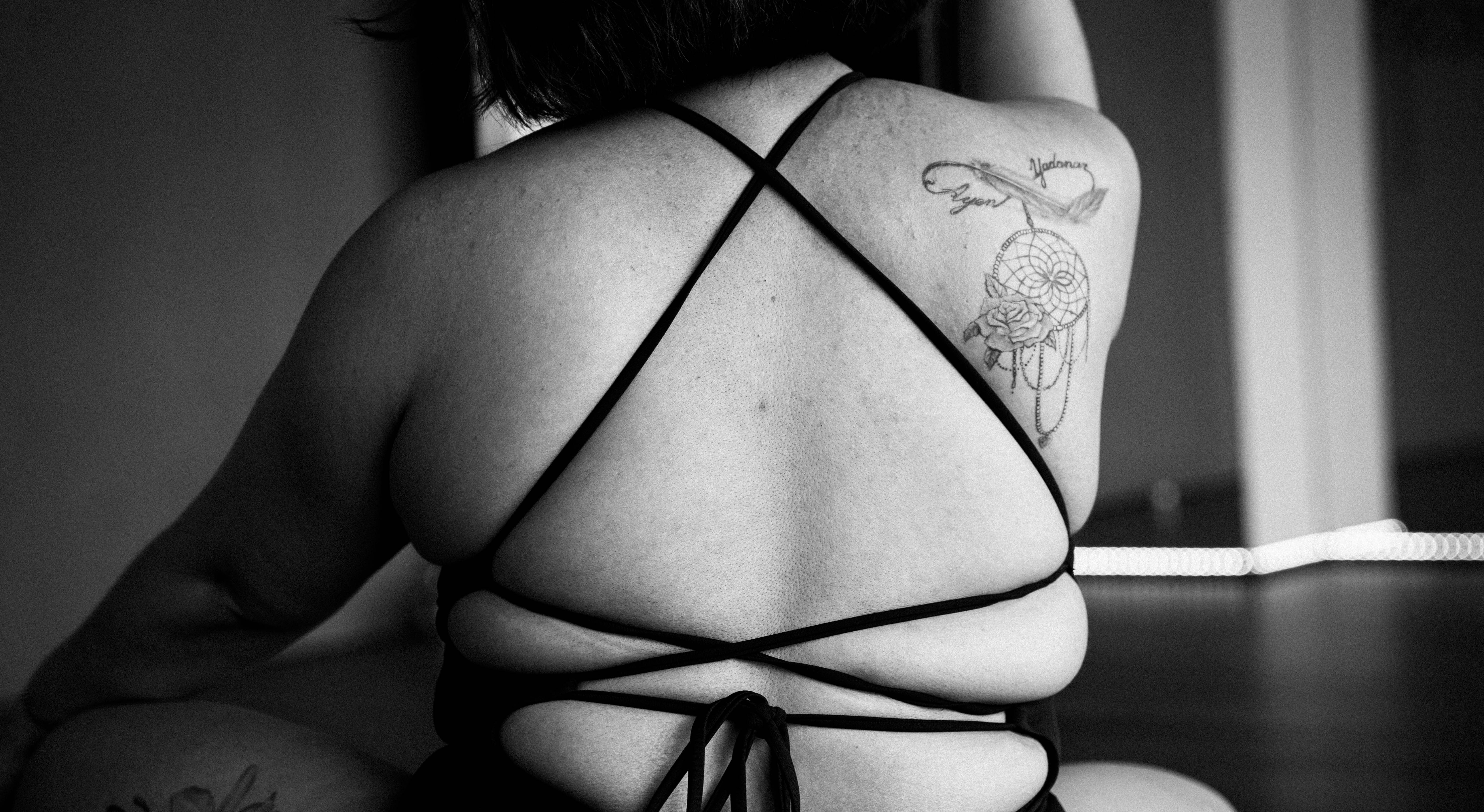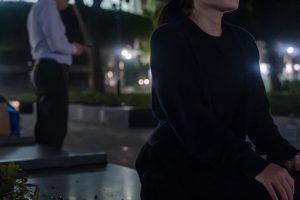Then, without warning, she inverts herself—her legs point to the sky, her arms unfurl like wings, her body a bird taking flight.
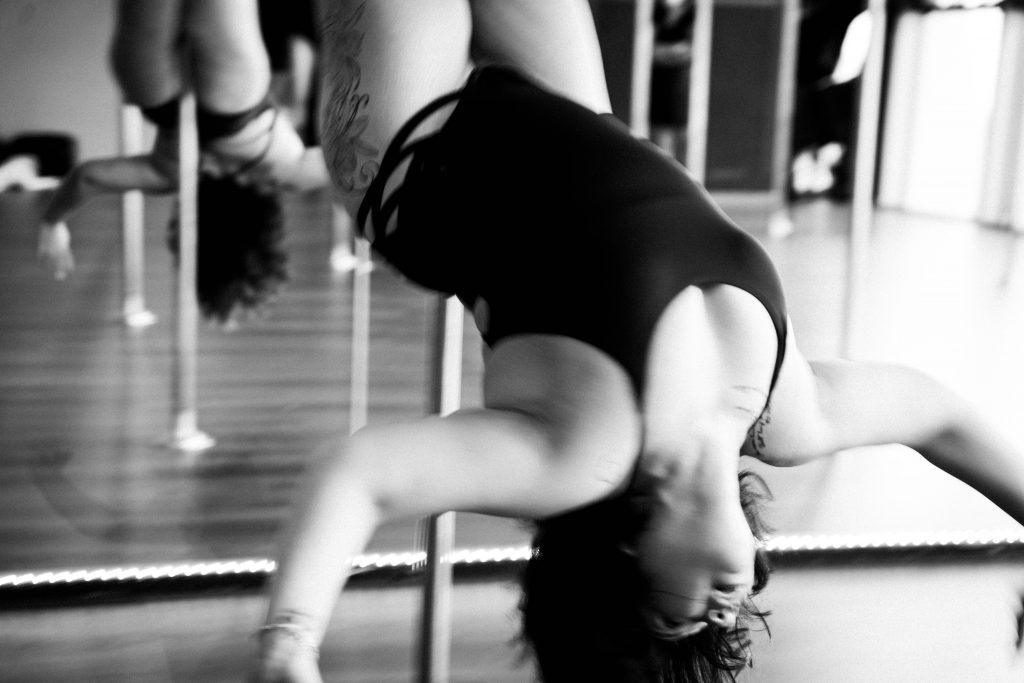
Wan, 42, is a pole dancer. Wan is also what some might term “plus-sized”, a fact that she is painfully aware of. Despite her interest in pole dancing, it took Wan a year before she mustered the courage to attend her first class. The obstacles were two-fold. Initially, she was put off by friends who associated pole dancing with strippers and being “dirty”. As a result, Wan used to think that pole dancing is “meant for hot ladies and sexy bods only”.
“Because of my body. I was so insecure,” Wan reveals. A pause, then she realises: “It’s been 6 years, but I’m still conscious about my body.”
That Wan took a whole year to overcome her fears of pole dancing is instructive of how we, as a society, think about women’s bodies and sexualities.
Why, in an age of sexual equality, diversity, and liberation, do we still think of eroticism as something immoral? Of plus-sized bodies as unsexy, unsightly, or shameful?
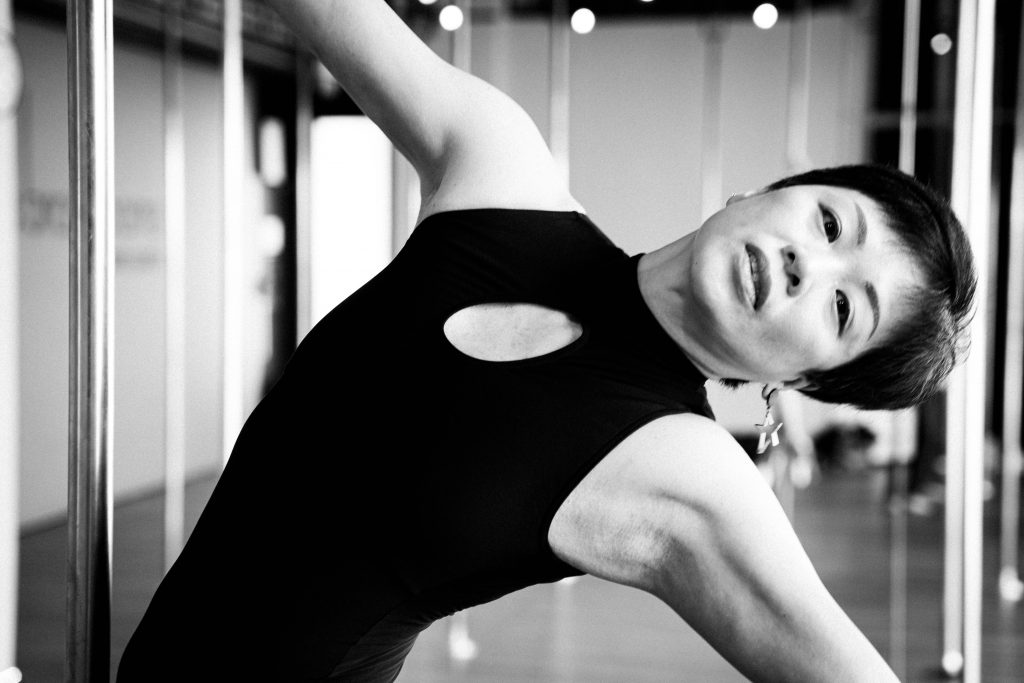
Everyone in the pole dancing studio nods fervently.
But this myopic perception is not innate; it is inculcated—or, to put it more accurately—infected by society.
“My daughter had to write a composition entitled ‘What Does Your Mother Do For Fun?’,” Kellie begins, and we erupt in laughter even before she gets to the good part. After we collect our senses, Kellie continues, “She wrote this whole thing about how her mother is a pole dancer. So I got calls from parents.”
“‘Oh, I understand you’re a pole dancer,’” they asked worriedly.
“I replied, ‘Ya, it’s a sport, you should come and join!'”
“‘Are you sure?’ they questioned.”
“After that, I had to explain to my child, ‘Listen, pole dancing is a sport. You get stronger, you embrace your body, you dress up in nice clothes, you role play.’”
But Kellie didn’t really need to defend pole dancing to her daughter. The children were, in fact, impressed by her daughter’s depiction of her.
“The kids don’t associate pole dancing with strip bars. Only the adults do. To [the kids], it’s only a dance.”
Our perceptions, in other words, are largely socially engineered, fed to us by media with agenda, government messaging, and religious dogma. At a young age, free from these influences, most of us neither judge nor discriminate.
Wan agrees, saying, “My daughter’s friends follow me on Instagram and go, ‘Wow! Your mum is a pole dancer!’”
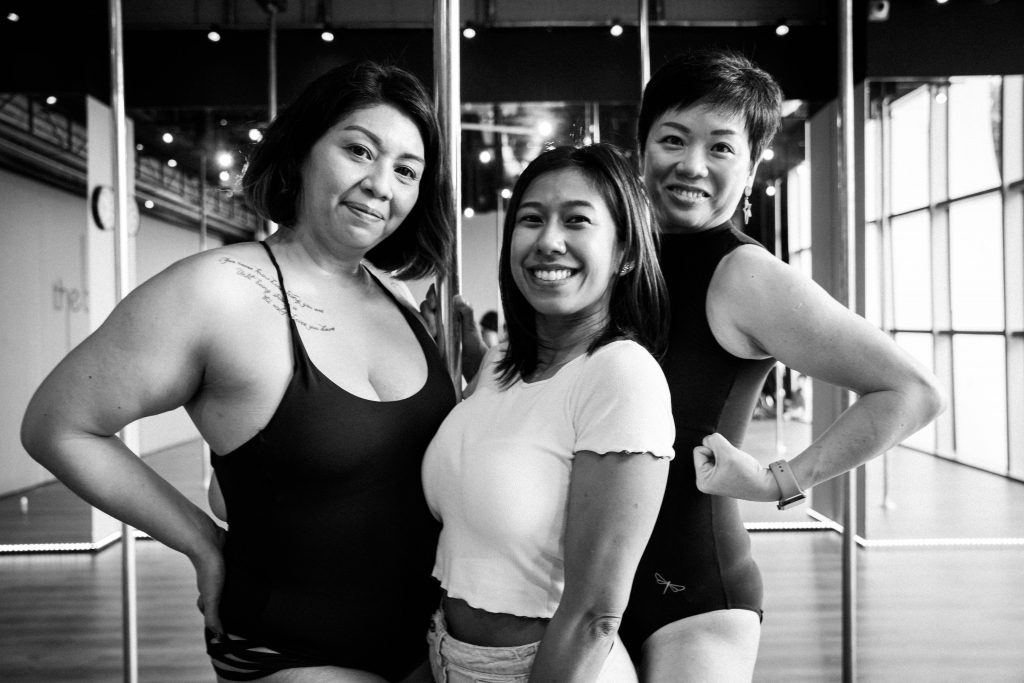
These efforts have paid off.
“Class is not a beauty contest,” Kellie affirms. “It’s not a place where everybody compares their size of boobs or ass. Most people are very, very supportive.”
Wan chimes in: “My pole dancing mates helped me grow more confident with myself. At the beginning, when I saw the girls doing all those beautiful tricks on the pole … I felt very small. And because I’m always insecure about my body, I even hated to look at myself in the mirror.”
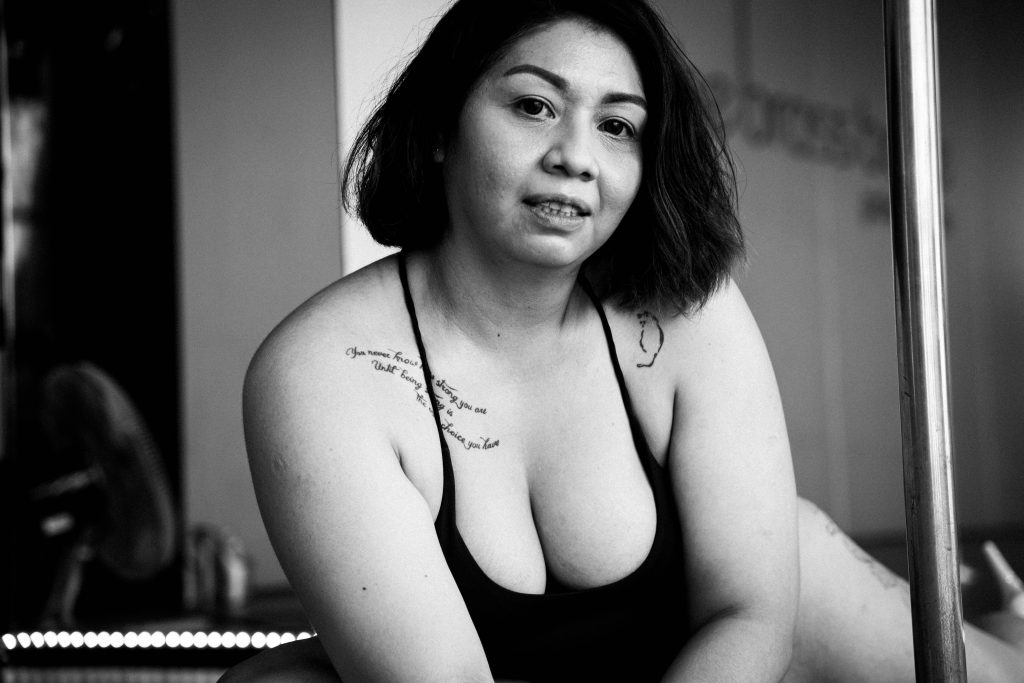
“To me, losing weight doesn’t matter anymore. Pole dancing is what I love to do—choreography is my forte. It gives me a lot of courage.”
So much courage, in fact, that, Wan has joined pole dancing competitions, a far cry from the Wan of 6 years ago who would avert her eyes from her own reflection.
“It’s about loving myself and being confident,” she smiles. “My mates and teachers played a large part in this. We’ve grown so close to each other that we’re like a family.”

One of them is Wan’s daughter, who used to be a regular attendee at The Brass Barre during her mother’s classes some years back. But instead of being absorbed by a book or an iPad, she would be captivated by the sight of her mother dancing. Enraptured, she would unconsciously imitate her mother’s moves: the flow of Wan’s torso, the elegance of her leg raises.
“[Today,] my daughter dances as well … and she’s on the bigger side, just like me, so she looks up to me as an inspiration,” Wan shares. “She keeps asking me: ‘Do I look okay? Do you think I can do this?’
“It’s what I’ve been through. So I share with her how I managed to find my self-confidence through pole dancing. That it’s okay.”
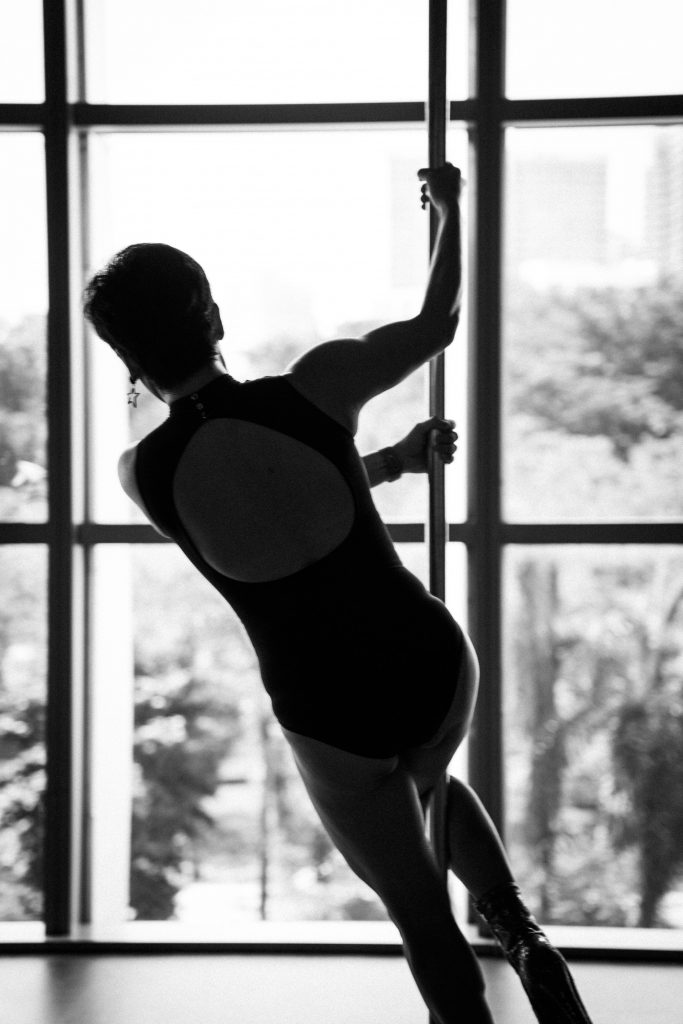
Each woman with whom I spoke has her own theory on why most Singaporeans seem to have a dysfunctional relationship with sex and their body. For Kellie, it’s the constant policing of what young girls are allowed to wear.
“You cannot say ‘cannot’,” she emphasises, with the wisdom of a mother of two, and the experience of someone who grew up under such restrictive parenting.
“I was from the era when my mum will instruct me, ‘You cannot wear like that, you’re asking for trouble, the men downstairs at the coffeeshop will catcall you.’
“I retorted, “I’ll wear whatever I want and beat the living daylights out of them!’”
But it’s not just about the fabric you put on your body. It’s also about the other things that feel good on your skin. It is, in other words, about your sexual health.
“You also cannot say things like, ‘You cannot use the vibrator ah!” Kellie admonishes.
“We’re all growing women, growing men. There’s always a need. All these are tools to help us be a human.”

Anita recounts that the entirety of her sex education in school consisted of trumpeting the two As: abstinence and abortion. According to “the external organisation that the school hired to run the programme”, abstinence was the only way to avoid sexually transmitted diseases, while abortion the only logical outcome of girls who—gasp—choose to engage in sexual intercourse.
By painting sexuality—itself a healthy and even necessary expression of human needs and connection—as something vile, immoral, and unhealthy, is it any wonder, then, that so many men and women grow up with warped perceptions of sex and their body?
(Case in point: throughout the morning at the pole dancing studio, the women gathered there traded so many stories of people they know who are ashamed of their “basketball-sized boobs” that it began to seem like a depressingly common occurence.)
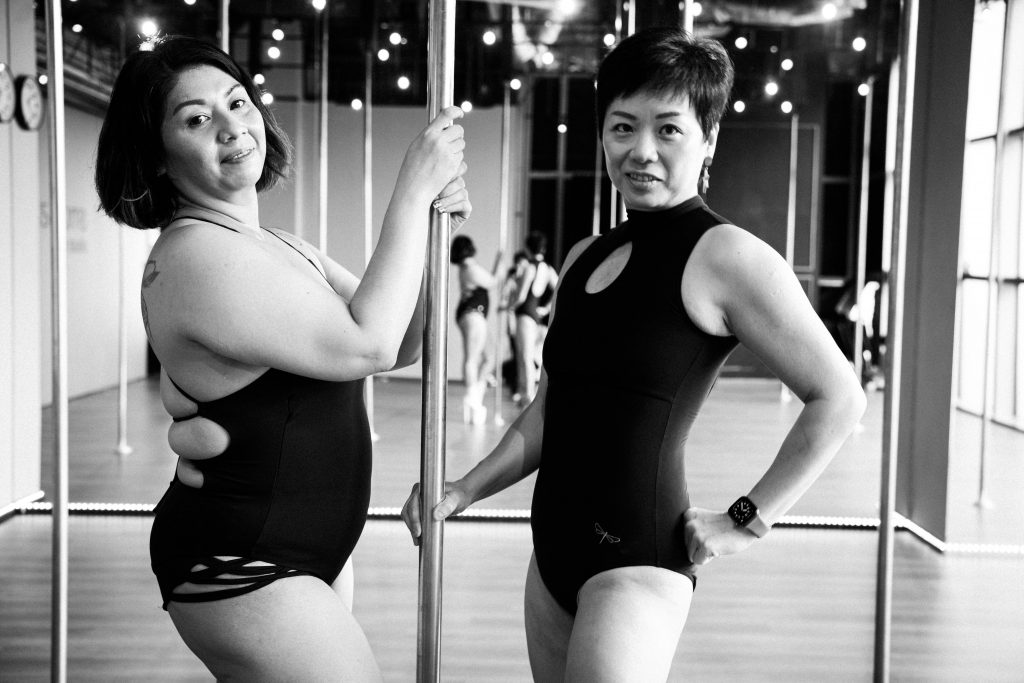
You would think that such a campaign would be welcomed by women, but Angela shares that some, on the contrary, have sent her messages of protest (ironically proving the need for the festival).
“Yesterday I received a message from a woman who said, ‘I don’t think your activities are appropriate. You want to desexualise [how women are viewed] yet you’re teaching women how to do pole dancing, makeup … aren’t you trying to reinforce all these thing?! You should teach them financial planning instead!”
Sighing, Angela wonders: “How can I explain to her that, yes, all these things are what people think are ‘sexy’, but the moment you bring awareness to them, you’re normalising them.”
By normalising these so-called “sexy” or provocative activities, women can embrace that there is no “normal”, with the paradoxical result that every body shape will be seen as normal—and everyone can have their own idea of what being sexy means.
For Kellie, sexy means being confident; for Wan, it’s loving yourself; for me (Kellie ambushed me by interviewing me in the midst of my interview with her, so I shall shamelessly include my response here), it’s having an intimate conversation with a partner.
But the best thing about it is that there’s no “right” answer: once we are able to foster a healthy relationship with sex and our bodies, being sexy is however we choose to define it.
What does “sexy” mean to you? Share your thoughts with us at community@ricemedia.co. If you haven’t already, follow RICE on Instagram, Spotify, Facebook, and Telegram.

